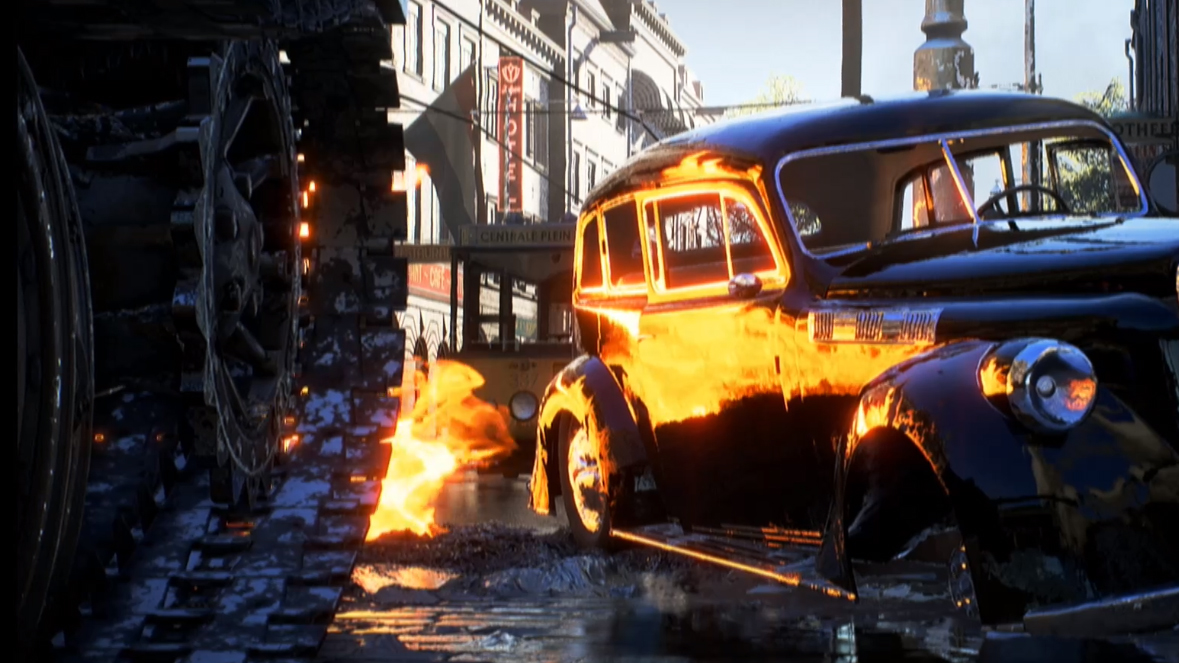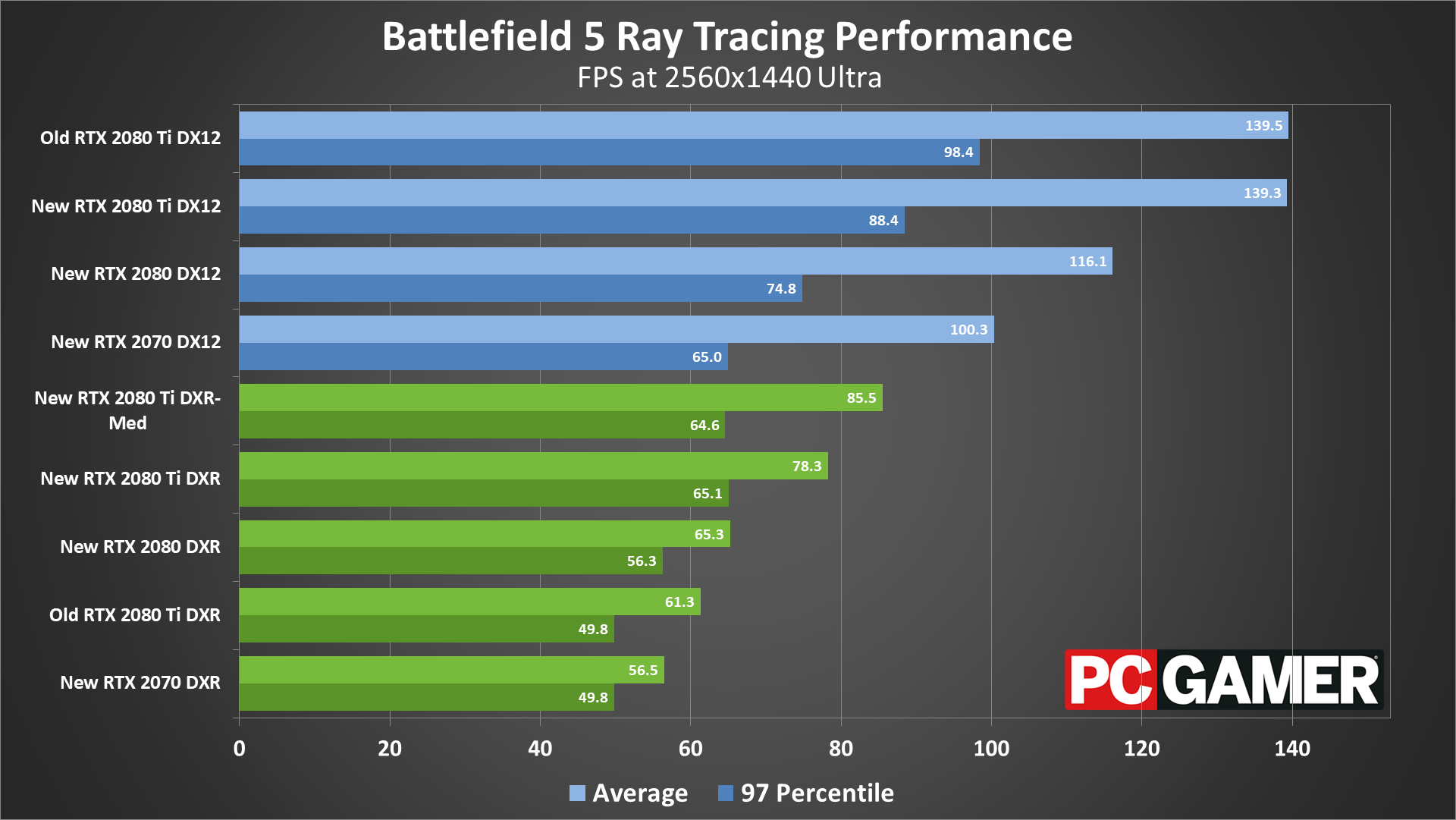Battlefield 5 Tides of War update boosts ray tracing performance
Smart optimizations will be a big part of extracting high performance from RTX GPUs.

With Battlefield 5 last month, Dice became the first company to release a publicly playable game with ray tracing effects (via DirectX Raytracing, aka DXR), for Nvidia's latest GeForce RTX graphics cards. I tested the performance in BF5, but was informed at the time that further optimizations were "in progress" and to probably not put too much time into testing as the early results would be invalidated. Earlier this week, Nvidia released its 417.22 drivers, which include improved support for Battlefield 5. Yesterday the Tides of War update dropped, and as promised performance with DXR enabled has been greatly improved.
I'm still testing additional GPUs, and I'll have a full performance analysis soon, but the following charts show the before/after performance for the 2080 Ti (I don't have 'before' numbers for the other GPUs), as well as post-patch performance for the other RTX models. Testing this time is in the Terailleurs campaign, which thanks to heavy foliage performs even worse than other maps with DXR enabled—or at least, it used to. It also stands to see the largest improvements. Here's how the RTX cards look now, running on a Core i9-9900K system.


With the new test sequence, performance with DXR enabled improves by 25-35 percent on the RTX 2080 Ti. The medium setting for DXR reflections also works properly now, as do the low and high options, but there's a clear downgrade in the amount of reflections that happens using the low and medium presets—offscreen explosions as an example don't appear to light up the environment properly, which is similar to what happens with SSR (screen space reflections). I'd recommend using either high or ultra DXR, or just stick with SSR.
In terms of performance, running without DXR is still the best way to play Battlefield 5 multiplayer, as performance is still around 80 percent higher. But if you're more interested in the singleplayer experience, enabling DXR is certainly possible—especially if you have an RTX 2080 Ti. And at least in my testing, I haven't seen Nvidia's claimed 50 percent average performance improvement anywhere. I think such gains will be limited to select areas.


The more interesting discussion here is what this means for the future of RTX and DXR gaming. Speaking about the update, Dice mentions using variable rate ray tracing to focus the use of rays on the most important surfaces. Surfaces that aren't reflective don't need a lot of rays, while water, ice, and glass surfaces benefit from additional rays. Foliage, which wasn't reflective and thus didn't benefit from more rays, was one of the major items to see optimizations. The denoiser also saw improvements, allowing for the same quality with fewer rays being cast.
There were also apparently various bugs related to how objects were handled that led to inefficiencies—destructible buildings and other objects previously could cause a significant drop in performance with DXR enabled. All told, depending on the scene and your hardware, you should see performance improvements of anywhere from 25 percent to 50 percent (or more in some cases) in DXR mode with the update, and all supposedly without compromising on visual fidelity. And without DXR? Performance appears to be unchanged.
Nvidia and Dice mention the potential for further optimizations, and that seems to be the way of things with DXR. That's no surprise, since optimizations have always been a part of gaming engine performance, but with ray tracing being so new there are plenty of techniques for developers to learn. Dice mentions improvements to the BVH (Bounding Volume Hierarchy) structure of the maps as being another area that has improved with this update.
We're still in the early days of DXR and RTX games, and we continue to wait for other ray traced games to arrive. Nvidia's belief in real-time ray tracing is a bit like Costner in Field of Dreams: If you build it, they will come. Shadow of the Tomb Raider has been available for nearly three months and still doesn't have a public DXR/RTX patch, despite being demoed at Nvidia's RTX launch event in August. But hopefully that will change soon. As a singleplayer experience, it stands to benefit far more for ray tracing, where improving visuals at the cost of performance won't necessarily make you less competitive.
Keep up to date with the most important stories and the best deals, as picked by the PC Gamer team.
Jarred's love of computers dates back to the dark ages when his dad brought home a DOS 2.3 PC and he left his C-64 behind. He eventually built his first custom PC in 1990 with a 286 12MHz, only to discover it was already woefully outdated when Wing Commander was released a few months later. He holds a BS in Computer Science from Brigham Young University and has been working as a tech journalist since 2004, writing for AnandTech, Maximum PC, and PC Gamer. From the first S3 Virge '3D decelerators' to today's GPUs, Jarred keeps up with all the latest graphics trends and is the one to ask about game performance.


